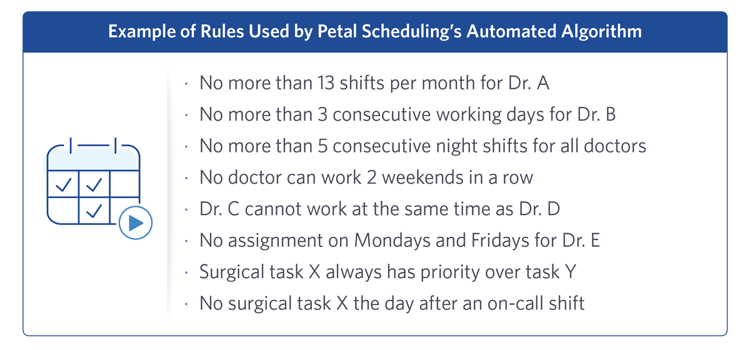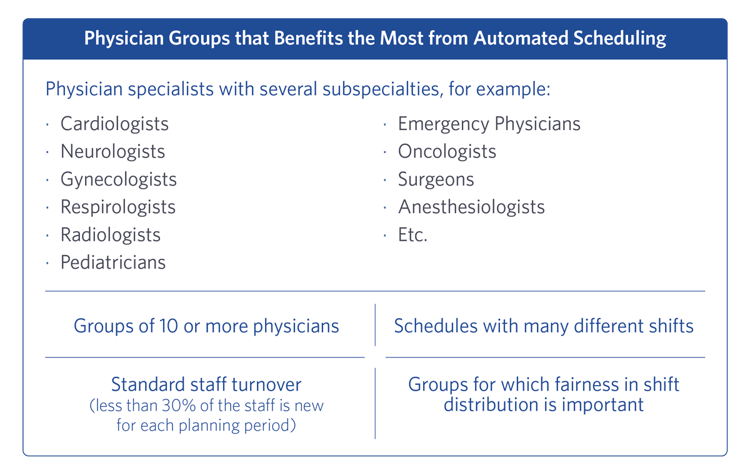
Physician scheduling is a highly complex task that requires a lot of time and energy. Because of this complexity, those in charge of creating the schedule for their medical service may find it difficult to believe that such planning can be done automatically using a computerized solution.
Yet, among the 37,000 physicians who use the scheduling solution developed by PetalMD, more than 6,400 are already taking advantage of automated scheduling. These physicians benefit from a more equitable distribution of shifts, while the scheduler saves about 75% of the time previously spent on planning.
How Does Automated Scheduling Actually Work?
In order to automate schedule creation, solutions such as Petal Scheduling use an algorithm that relies on different rules. These rules reflect planning constraints such as: physician absences, minimum on-call coverage, shifts that can only be performed by certain subspecialists or equity targets. Each group of physicians has its own set of rules, which can be established in collaboration with physician scheduling experts.
The automated scheduling algorithm compares all possible combinations, then proposes a shift distribution that best respects the totality of the rules, according to the priorities given to each rule. As the schedule is created, the planner can make manual changes to customize or adjust the distribution.
On occasion, the rules used for automated scheduling may need to be changed. For example, if a new doctor joins an emergency room team with a contract assuring him of a minimum of 16 shifts per month, a new rule must be added to the algorithm to reflect this. In the vast majority of physician groups, the time required to change the rules is far less than the time required to change the schedule manually.

The More Complex the Schedule, the Greater the Benefits for Physicians
Generally speaking, the more complex the schedule is, the more automated planning can save the scheduler a significant amount of time in the planning process, while providing members of the group with a better equitable distribution of shifts.
For example, in most medical specialty groups with several subspecialties, not all physicians can perform every shift. This reality brings an additional complexity to the schedule, one that a computerized solution can address easily with the appropriate rules. Also, automated planning is particularly relevant for physician groups that want to ensure equity. A fair distribution of shifts might need to balance:
- Weekends
- Holidays
- Night shifts
- On-Call Shifts
- The most favored shift(s) for the group
- The least favored shift(s) for the group
In fact, the more physicians and shift types there are in a scheduled group; the greater the number of equity factors there are that need to be taken into account. Thus, the more it becomes important to use a planning tool that automatically takes equity into account.

What if my Group of Doctors Wants to Take Advantage of Automated Scheduling?
If you consider your schedule complex, we suggest you attend a customized demonstration of the Petal Scheduling solution. That way, you’ll be able to see for yourself how automated planning can save you time and improve equity when creating the schedules for your group.
"Automated scheduling tools save us a lot of time and shift trades between cardiologists are now much easier. Now that we know the benefits of Petal Scheduling’s automated schedules, it is hard to imagine how we previously managed scheduling without an electronic tool like PetalMD."
Faisal Aziz,
Regional Cardiac Program Leader, Vancouver General Hospital


